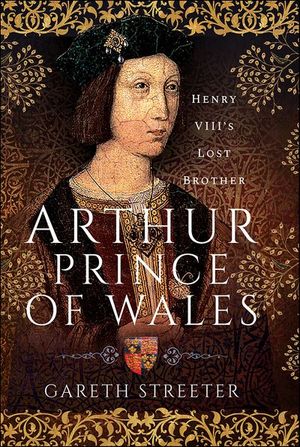Arthur, Prince of Wales
Published by Pen & Sword Books
The legacy of Arthur Tudor as more than just the boy who died prematurely and paved the way for the revolutionary reign of his younger brother, Henry VIII.
At the time of his birth, Arthur Tudor represented his father’s hopes for a dynasty and England’s greatest chance of peace. As he grew, he witnessed feuds, survived rebellion and became the focal point of an international alliance.
At a young age, Arthur was dispatched to the Welsh border, becoming a figure head for a robust regional government. While never old enough to exercise full power in his dominion, he emerged as a figure of influence, beseeched by petitioners and consulted by courtiers.
Finally, after years of negotiation, delay and frustration, the prince finally came face to face with his Spanish bride, Katharine of Aragon. The young couple had shared a destiny since the cradle. Securing the hand of this prestigious bride for his son had been a center piece of Henry VII’s foreign policy. Yet, despite being fourteen years in the making, the couple were to enjoy just five months together before Arthur succumbed to a mysterious illness.
Arthur’s death at the age of fifteen was not just a personal tragedy for his parents. It changed the course of the future and deprived England of one of the most educated and cultivated princes in their history. Arthur would never wear the crown the of England. But few Princes of Wales had been better prepared to rule.
Arthur, Prince of Wales: Henry VIII’s Lost Brother shows that Arthur Tudor was more than a prince who died. He was a boy that really lived.
BUY NOW FROM
COMMUNITY REVIEWS

